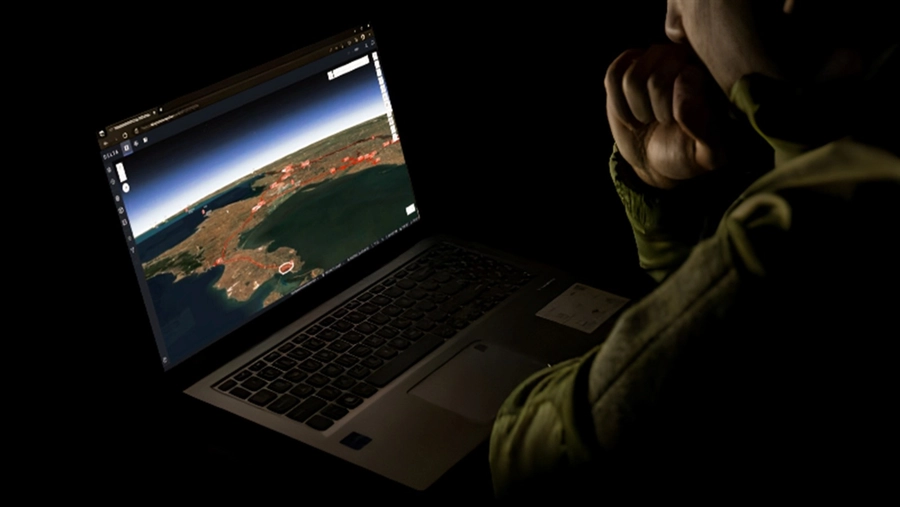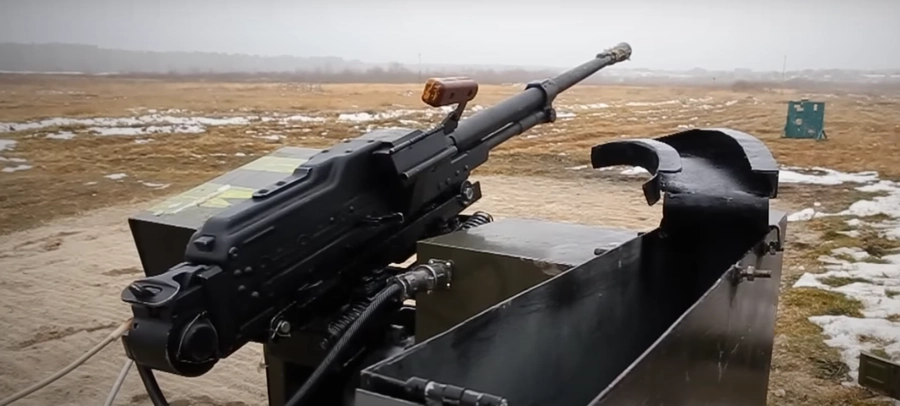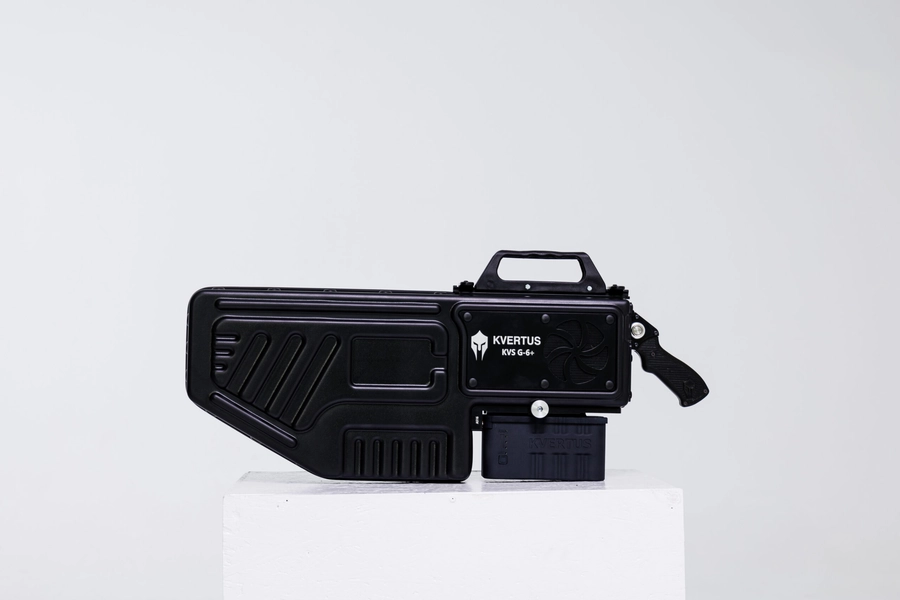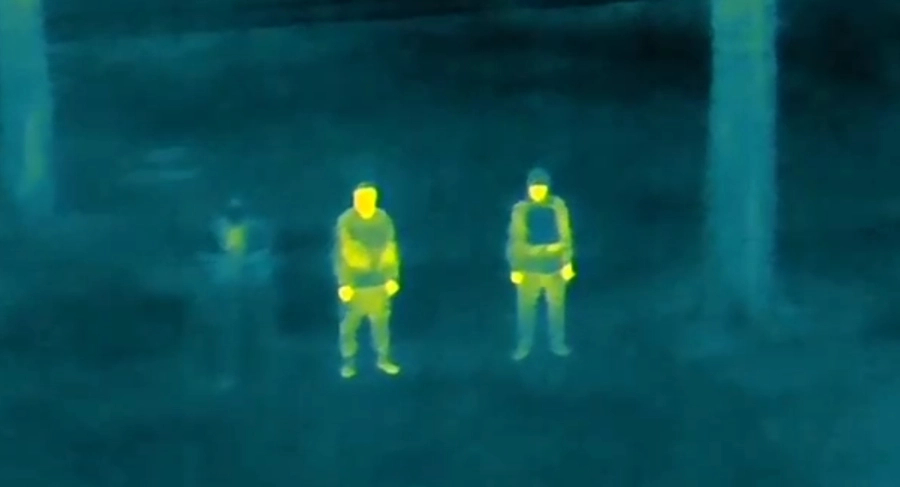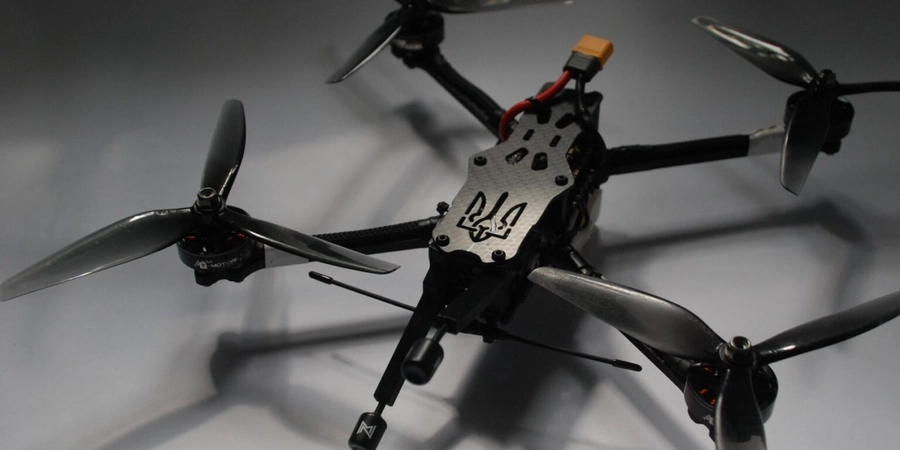Helping to defend Ukraine against Russia's full-scale invasion is a group of tech talent devising new means to cope with the changing battlefield requirements.
According to a list compiled by DOU, a Ukrainian tech recruitment site, there are now at least 44 defense tech startups in Ukraine developing modern warfare solutions for the Armed Forces of Ukraine ranging from battlefield management to drone manufacturing, some of which have already been deployed to the front.
JOIN US ON TELEGRAM
Follow our coverage of the war on the @Kyivpost_official.
Some of them also received support from Brave1, a government funding program that finances domestic defense tech development that issued more than $2 million worth of grants this year, as per an earlier Kyiv Post report.
Here are some of the notable wartime innovations from Ukraine.
Delta Battlefield Management System
PHOTO: Ukrainian Ministry of Defense
Delta is a digital battlefield management platform developed in Ukraine that collects, processes and displays information about enemy forces – like a live digital map for military activities – that improves reaction times for the military.
It also played a crucial role in drone deployments as it facilitated the target acquisition and identification process across the Ukrainian military.
Unveiled at the beginning of this year, the Delta system was domestically developed by the Ukrainian government agencies supported by the country’s IT talent using some of the latest technologies such as cloud-native environments, zero trust security and multi-domain operations.

ISW Russian Offensive Campaign Assessment, February 22, 2025
The platform could be accessed by soldiers through commonly found devices such as smartphones, tablets and laptops. The cloud-native environment also made it easily scalable and deployable, meaning that it would take less time for developers to introduce improvements to the platform.
The system was developed with NATO standards and compatible with similar solutions used by NATO member states, paving the way for Ukraine’s potential accession to the military alliance.
Saber Remote-Controlled Fire System
PHOTO: Screen grab YouTube: www.peoplesproject.com
“Shablya,” meaning Saber in Ukrainian, is a remote-controlled fire system equipped with a machine gun.
In April, the Ukrainian military demonstrated how Saber operates in a video published on Telegram, where a Saber unit could be seen standing on a tripod equipped with optics and firing a machine gun into the distance.
“Fire coordination is carried out with the help of a control panel, which allows you to fight at a distance, saving the operator's life,” the announcement read.
Sea Baby Unmanned Surface Vehicles (USVs)
The Sea Baby naval drones were used to destroy part of the Crimean Bridge in July 2023.
Much of Sea Baby’s classification remains classified, but it is known that the drones were controlled via satellites and capable of carrying 800 kg of TNT with a minimum range of 800 km – as specified by the Security Service of Ukraine (SBU). It also featured a new hull design with a rising skiff-like bow compared to older naval drones in use.
In other naval operations, the naval drones were equipped with 450 kg explosives that damaged the “Olenegorsky Miner” landing craft and a Russian oil tanker.
Kvertus Anti-Drone Systems
PHOTO: www.kvertus.ua
Kvertus is a Ukrainian company that develops anti-drone electronic warfare equipment for Ukrainian soldiers.
The most recognizable product of Kvertus is perhaps their futuristic QUERTUS AD G-6+ anti-drone gun that looked like something straight out of a sci-fi movie. Costing $13,464 per unit, the gun functions by suppressing the control and navigation channels of UAVs, which would disable the control and force them to land.
The company also developed other anti-drone systems that could be installed in armored vehicles that disable incoming drones, protecting the valuable armored assets on the battlefield.
This kind of anti-drone technology only works with remote-controlled drones, however, as some kamikaze drones such as the Shaheds have pre-entered coordinates and are not susceptible to jamming.
Invisibility Cloak
PHOTO: Telegram: https://t.me/zedigital/3703
As thermal imaging equipment saw widespread adoption on modern battlefields by both Ukraine and Russia, a way is needed to counter them.
In October, Ukraine’s Deputy Minister of Digital Transformation Mykhailo Fedorov announced the development of an “invisibility cloak” that could block heat radiation and shield soldiers from thermal imagers. It weighs around 2.5 kg and is flame-retardant.
The Taliban have also used similar tactics to evade US thermal image detections using “space blankets” often found in outdoor shops, but the Ukrainian version is also camouflaged, making it effective during daytime operations as well.
Aerial Drones
PHOTO: ArmyInform
The list of innovations would not be complete without mentioning unmanned aerial vehicles (UAVs), such as the Cobra loiter munition and KH-S7 first-person view (FPV) drones, both produced in Ukraine.
The Cobra drone has a flight range of 300 km and a payload of 15 kg, and it recently entered mass production, costing $2,000 per unit; The KH-S7 FPV drone reportedly had a maximum range of 9.5 km with 1 kg of payload. It is known that there are at least 50 drone models produced in Ukraine.
While the concept of UAVs is nothing new, the war in Ukraine has seen widespread adoption of drones for different purposes and of varying origins, a phenomenon some have described as a “revolution” in modern warfare.
Even though the Turkish-made long-range Bayraktar drones captured the headlines at the offset of Russia’s full-scale invasion, Ukraine’s domestic production and development focuses primarily on small and mid-sized loitering munitions and reconnaissance drones.
Understand the different kinds of military drones in an earlier Kyiv Post guide.
Ukraine aimed to boost its domestic drone production to offset the artillery shortage, with President Volodymyr Zelensky vowing to produce 1 million units in 2024, where officials said they would need between 100,000 and 120,000 drones a month to counter Russia’s invasion.
You can also highlight the text and press Ctrl + Enter



